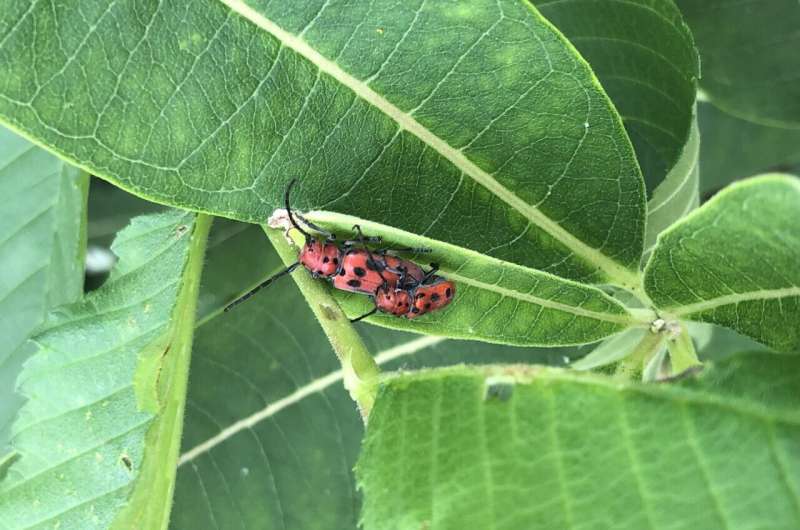The red milkweed beetle’s genome offers fascinating insights into the complex relationship between this specialized herbivore and its toxic host plant, the milkweed. Researchers have uncovered the genetic adaptations that allow the beetle to safely feed on the plant’s deadly cardiac glycosides, as well as insights into its chemosensory biology and plant cell wall degradation abilities. These findings have broad implications for understanding insect-plant interactions, with potential applications in agriculture and forestry. Milkweed and Tetraopes beetles have been valuable models for ecological and evolutionary research for over a century.

Unraveling the Genetic Secrets of the Red Milkweed Beetle
The red milkweed beetle has long been a subject of fascination for researchers, as it has evolved a remarkable ability to safely feed on the toxic milkweed plant. By sequencing and analyzing the beetle’s genome, scientists have uncovered the genetic adaptations that allow it to thrive in this specialized ecological niche.
The researchers found that the red milkweed beetle has an expanded set of genes from the ABC transport family, which may help it transport and sequester the toxic cardiac glycosides found in milkweeds. This allows the beetle to safely consume the plant’s defenses and even use them to its own advantage, deterring potential predators. Additionally, the study identified key differences in genes related to smell, taste, and the enzymes used to break down plant cell walls, providing insights into the beetle’s specialized herbivory and adaptation to its host plant.
Insights into Insect-Plant Interactions and their Ecological and Economic Implications
The findings from the red milkweed beetle genome study have broader implications for understanding the complex and often co-evolutionary relationships between insects and plants. By comparing the red milkweed beetle to the Asian longhorned beetle, a more generalist herbivore, the researchers were able to uncover the genetic underpinnings of specialized plant feeding.
These insights have the potential to inform our understanding of agricultural and forestry pests, as well as efforts to mitigate their impact. Many plant-feeding beetles, including longhorn beetles, have acquired the ability to break down plant cell walls through horizontal gene transfers from microbes. By studying the diversity of proteins encoded within beetle genomes, scientists can learn more about the genetic basis of beetle biology, evolution, and their propensity for interactions with plants. This knowledge could aid in the development of more effective pest management strategies and help protect important crops and forest resources.
Exploring the Chemosensory Biology of the Red Milkweed Beetle
In addition to studying the genome, the research team also collected and analyzed RNA samples from the antennae of male and female red milkweed beetles. This provided valuable insights into the beetle’s chemosensory biology, which is how it senses and responds to its environment, including its host plant and potential mates.
Understanding the chemosensory biology of herbivorous insects like the red milkweed beetle has broad relevance for agriculture and forestry. By learning more about how these insects use their senses to locate and interact with their host plants, researchers can develop more targeted and effective strategies for pest management. This could include the development of pheromone-based attractants or repellents, as well as the identification of key sensory cues that could be disrupted to prevent pest infestations.
